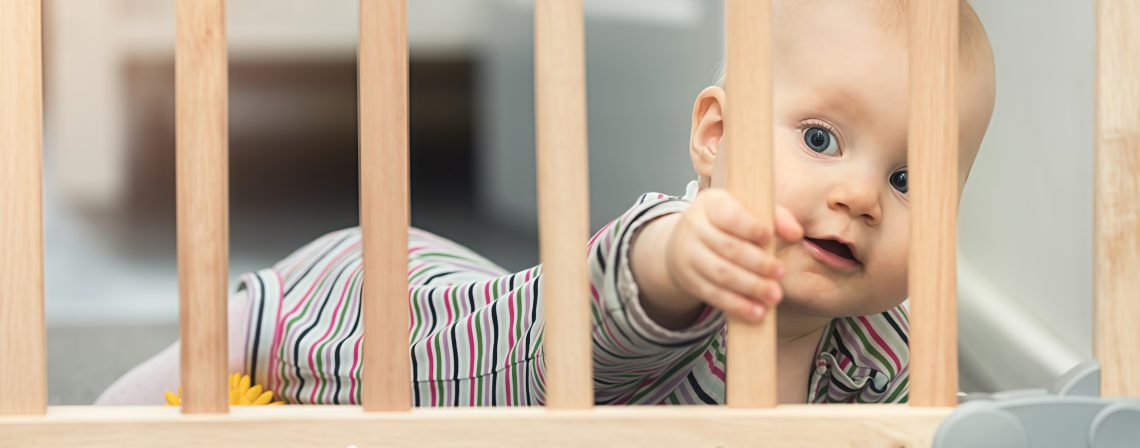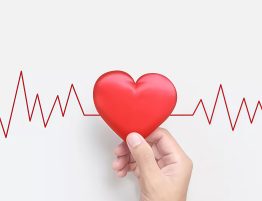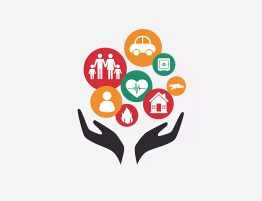
Playground Safety
- Don’t leave small children alone on the playground! An accident can happen in seconds, even if adults or older children are nearby, so an adult must be present at all times.
- Always keep a close eye on your child and stay close to your child within arm’s reach to quickly protect from injury;
- Teach your child safety rules:
- In the sandbox, you cannot throw sand at others, throw it up, or put it in your mouth, or take other people’s toys without permission;
- When on a swing, hold on tightly to the handrails and sit still; do not jump off or walk around moving swings – you may be hit if you do not run away in time; do not stand with your feet on the swing seat – you may fall on your head;
- On the slide, you need to climb up one at a time, without pushing others, and only go down if there is no one below; after going down, immediately run to the side;
- On carousels, you must not stand with your feet on a seat while it is moving, run in a circle holding onto one seat, or spin an empty carousel – if it stops abruptly, you could be hit by the next seat.
Water Safety
- When children swim, it is essential to strictly adhere to water safety rules. Children must be informed of the potential dangers of swimming. Parents must supervise their children during the summer if there is no organized recreational facility for them, especially in areas with rivers and reservoirs.
- Children may swim only in designated areas: in well-maintained bodies of water, and only in the presence of adults and/or lifeguards. When relaxing on the banks of rivers, lakes, and ponds, children should be kept in full view at all times. Avoid active play in the water, especially involving grabbing hands and feet, as well as jumping and throwing themselves into the water.
- Inflatable pools with water depths of 20-30 cm can pose a danger to small children. It is necessary to install barriers around these structures and remove toys after swimming to minimize the temptation to retrieve them independently.
Reasons for potential danger to children
- “Delay” of parents in the development of the child – “We didn’t even imagine that our child could do this already”;
- Ignorance of possible risks of injury and potential dangers – no one anywhere teaches this to young parents, the widespread use of modern technological advances in the home, and the reduced priority given to the safety of environmental items for young children;
- Reducing the sense of danger in various places where the child is present – accidents with small children can happen at home, on the street, at the dacha, at grandma’s, at a party, even if there are adults or older children nearby;
- Ignorance of the main causes of accidents: falls, poisoning, burns;
- Underestimating the individual capabilities of a child – an accident can happen in a matter of seconds, so it is necessary to have an adult present near the child at all times within arm’s reach;
- Lack of skill in identifying potentially dangerous objects in a new space (when visiting grandma, friends, neighbors) – sharp corners, wires, small objects that can cause choking (buttons, coins, beads), etc.
- Never leave a child alone at home, in the bath or in the car, even if the child is sleeping;
- Never leave a child on an elevated surface (bed, sofa, armchair, changing table);
- Never leave a child alone with pets.
Car safety
- Decree of the President of the Republic of Belarus No. 483 of October 13, 2014, amending Decree No. 551 of November 28, 2005, “On Measures to Improve Road Safety”
requires children under 12 years of age to be transported in passenger cars using child restraints or other means that allow the child to be safely secured with a seat belt (except in cases where the child’s height exceeds 150 cm, as well as when transporting in a taxi); - Use only approved child seats that are appropriate for the child’s age and weight;
- Seat children in a seat that faces rearward of the vehicle;
- Never place a child or infant on your lap while riding in a car or truck;
- Everyone in the car must wear a seat belt.
Home safety. Living rooms.
- All cabinets and drawers containing sharp or fragile objects, chemicals or medicines must be locked;
- Cover all electrical outlets with outlet covers;
- Install special gates for children on all stairs above and below;
- Cover all corners and sharp edges of furniture with special corner protectors;
- Install screens around hot radiators, stoves, paraffin or room heaters;
- Electrical wires must be kept out of reach of children.
Home safety. Children’s room safety.
- Use a carefully fitted mattress in your crib. When raising the side rails, secure them with latches;
- The safe distance between the bars of the side wall of a baby crib should be no more than 6-7 cm, but not less than 2 cm, so that the baby’s arm or leg does not get stuck;
- Do not sleep in the same bed with your child;
- Do not use pillows for children under 12 months;
- Do not use heating pads. Do not place your baby on a water mattress, pillow, or other soft surface that could suffocate the baby;
- Do not put your child to sleep in direct sunlight, near heating appliances or other heat sources;
- Remove laces from clothing. Do not put hats with strings, necklaces, rings, or bracelets on children;
- Before falling asleep, place the child on his side.
Home safety. Preventing falls from windows.
- Don’t leave small children alone! Most falls occur when parents leave their children unattended. If a child is afraid to be alone in the apartment, don’t leave them alone, even for a short time. Often, when children feel afraid, they look out the window or from the balcony, hoping to see their parents, which can lead to a fall.
- Move all types of furniture away from windows to prevent a child from climbing onto the windowsill;
- Open windows from the top, not the bottom;
- Install special locks or blockers on windows that prevent the child from opening the window more than 10 centimeters;
- Never rely on mosquito nets! They are not designed to protect against falls. A mosquito net contributes to accidents because the child feels safe behind it and leans against both the window and the net. Children often fall out of these nets;
- Protect your windows by installing window bars. Bars will prevent children from falling from open windows. The distance between bars should be no more than 7-10 cm.
- Do not allow children to jump on the bed or other furniture located near windows;
- Teach children safety lessons. Teach older children to supervise younger children;
- Don’t forget about safety when visiting;
- Don’t place your child on the windowsill. Don’t draw their attention to window manipulations. It’s best to do them out of their sight;
- Never leave windows open if there is a child at home!
Home safety. Kitchen and bathroom safety.
- Hot drinks and food, knives and electrical appliances should be kept out of reach of children;
- When preparing food, keep the handles of pots and pans out of the reach of children;
- Use safety belts on the high chair;
- Set the water heater temperature to 125°F (49°C) or less. Make sure the water in the tub is warm, not hot;
- For the first 5 months, use a baby bathtub; in a large bathtub, use a bath seat;
- Pour a small amount of water into the bath;
- Never leave your child alone in the bath. Before bathing, gather all necessary supplies and place them within easy reach. If you forget anything, do not leave your child alone; wrap them in a towel and take them with you into the room.
7 things that are dangerous to a child’s health that parents forget about.
- Household Chemicals:
Place containers containing detergents, household chemicals, solvents, paints, and varnishes on a high shelf or in a cabinet; - Coins, magnets, badges:
Keep coins out of children’s reach and constantly supervise yourself, your family, relatives, and guests. Remove badges and souvenir magnets; - Power Supplies:
Control children’s access to power supplies and items containing them (remote controls, watches, flashlights, blood pressure monitors, electromechanical toys); - Age-inappropriate toys and sports equipment:
Older children’s toys and items pose a particular danger, including board games, construction sets, small stationery items, bicycles, dumbbells, jump ropes, and other sports equipment, gear, and equipment; - Handbags:
When entering a house, apartment, or room, place your handbag, briefcase, backpack, or purse out of the child’s reach or lock it in a closet. Do not leave it on a chair, dresser, or floor, as their contents, including nail scissors, nail files, keys, hairpins, and other small items, may pose a danger to the child. - Potted plants:
Place out of the child’s reach. Remove decorative stones, shells, and drainage. Avoid plants that pose a health risk (azaleas and other euphorbias, begonias, monsteras, oleanders, philodendrons, and others). - Pet Food:
Keep containers of food for dogs, cats, fish, and other pets, as well as the containers from which pets eat, out of the reach of children.
Toy safety
- Keep small items out of your child’s reach. If the items fit through the hole in the toilet paper roll, they are too small for your child;
- Remove packaging before giving the toy to your child;
- Wash toys regularly;
- Musical crib hangers should be placed out of the child’s reach and removed when the baby begins to sit independently;
- Buy toys that are non-flammable, washable and non-toxic;
- Toys should be appropriate for the child’s age;
- Provide children with safe items to play with;
- Never immerse electrical toys in water;
- Make sure children don’t play with toys belonging to older siblings. Their toys can be dangerous for children under 3 years old;
- Keep toys away from fire.
Model center for training parents in the basics of child safety
- Operates on the premises of the Health Institution “Brest City Polyclinic No. 1” at the following address: Brest, Kizhevatova St., 74, office 248.
- Opening hours: Monday-Friday from 11:00 to 12:00.
- Phone +375 162 57-40-80
- The model center operates to raise public awareness of the risk factors for childhood injuries, develop new skills for safe care of young children, and improve preventive work.
- Training programs are being implemented for the following population groups:
- Parents and family members;
- Employees of healthcare institutions;
- Employees of educational institutions.
- Individual consultations are provided to parents to identify dangerous areas in their living conditions and to teach them safe child care skills.
- Training and consultations at the Model Center are free of charge.








